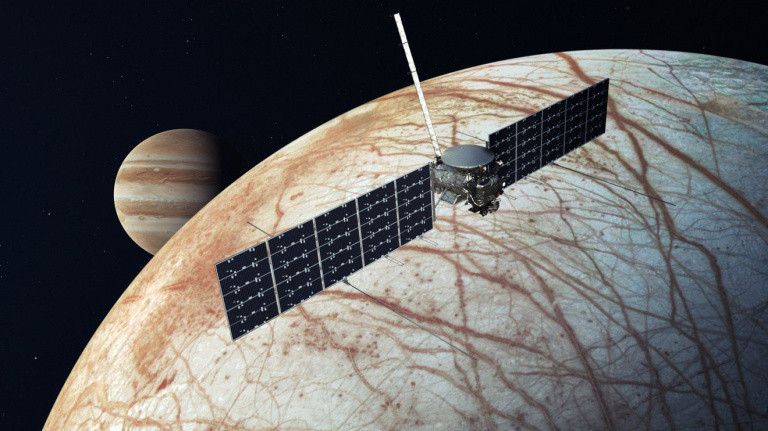After the rovers intended to explore the surface of other planets, NASA, the American space agency, is now working on the development of a robot to swim in extraterrestrial waters. A project that could be useful in the coming decades.
If, today, the planet Mars is at the heart of many challenges in terms of space conquest, NASA engineers are already anticipating the next step. One of the goals associated with exploring the planets of our solar system is to search for traces of life, whether present or past. And one of the best hopes of finding it is to scan the water present on certain stars.
As such, we can cite the icy moon of Saturn, named Enceladus. Beneath a thick layer of ice are bodies of water that may be hiding secrets. NASA is convinced of this: when the Cassini probe flew over the region in 2004, it detected interesting molecules in the haze of Enceladus : methane, in particular, which is often associated with the presence of life.
But to hope one day to explore the aquatic depths of Enceladus, and other similar stars, you need the right equipment. And that’s what NASA is currently working on.
Swimming robots to explore space
NASA Jet Propulsion Laboratory robotic mechanical engineer Ethan Schaler has developed a concept consisting of a probe to melt ice on a planet’s surface, then dump mobile phone sized water drones. The latter would then be able to navigate in extraterrestrial waters and extract data.
This project, named Sensing With Independent Micro-Swimmers (SWIM) is only in its infancy. Its first phase, intended to carry out a feasibility study, was financed to the tune of 125,000 dollars. Now, a second phase, funded by NASA’s Innovative Advanced Concepts program to the tune of $600,000, involves design 3D printed prototypes and test them under different scenarios.
Illustration du Sensing With Independent Micro-Swimmers (SWIM)
A project with crazy ambitions
“With a swarm of small swimming robots, we will be able to explore a much larger volume of ocean water and improve our measurements by having multiple robots collecting data in the same area”explains Ethan Schaler in a statement.
The objective of the project will be to “reducing risk while improving science”sums up NASA. A device, named Cryobot, will be submerged in water and it will release the SWIM drones. The Cryobot will collect the information and then transmit it to some sort of transmission tower on the surface of the ice. The idea will be to allow the Cryobot to go as far as possible under the ice and therefore in the water, while taking the drones with him to collect information where it is currently possible to imagine being able to go.
“Each robot would have its own propulsion system, on-board computer and ultrasonic communication system, as well as simple temperature, salinity, acidity and pressure sensors. Chemical sensors to monitor biomarkers — signs of life — will be part of Schaler’s Phase II study”adds NASA.
Diving drones soon in space?
Although NASA has great ambitions for this project, the fact remains that a very early stage of development. For the moment, he is not associated with any planned mission, which suggests that if he reaches the finalization stage, it will not be exploited before the 2030 horizon.
In 2024, the mission Europa Clipper
will leave Earth bound for the Jovian moon Europe which it will wait for in 2030. The objective of this mission will be to collect information on this star, which NASA suspects of harboring a life form : scientists around the world believe that under the thick layer of ice that covers Europa hides a vast ocean. It is perhaps on Europe that Ethan Schaler’s ambitious project will take its first steps, or rather its first fathoms, in the decades to come.

